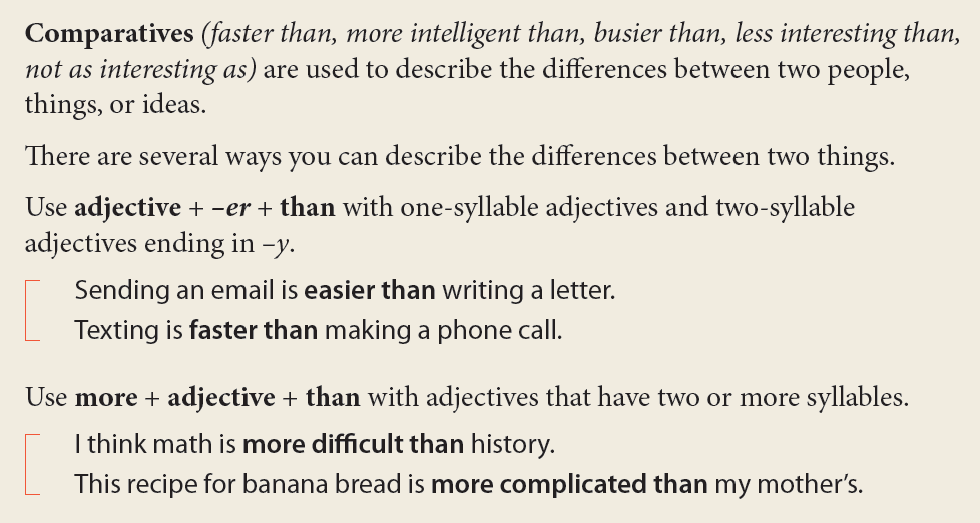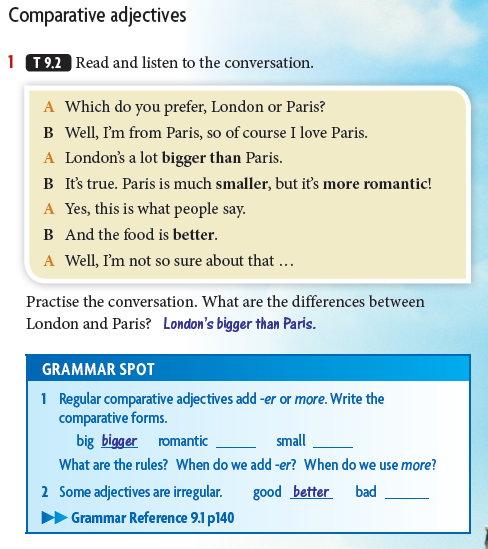
Jon Hird, materials writer and teacher trainer, discusses inductive and deductive grammar teaching, comparing and contrasting the two, and debating the pros and cons of their use in the classroom.
There are two main ways that we tend to teach grammar: deductively and inductively. Both deductive and inductive teaching have their pros and cons and which approach we use when can depend on a number of factors, such as the nature of the language being taught and the preferences of the teacher and learners. It is, however, perhaps generally accepted that a combination of both approaches is best suited for the EFL classroom.
Some agreement exists that the most effective grammar teaching includes some deductive and inductive characteristics.
– Haight, Heron, & Cole 2007.
So what is deductive and inductive grammar teaching? In this blog, we will first take a look at the underlying principles of inductive and deductive reasoning and then look at how this applies to grammar teaching and learning. We will then briefly consider some of the pros and cons.
Deductive and inductive reasoning
Deductive reasoning is essentially a top-down approach which moves from the more general to the more specific. In other words, we start with a general notion or theory, which we then narrow down to specific hypotheses, which are then tested. Inductive reasoning is more of a bottom-up approach, moving from the more specific to the more general, in which we make specific observations, detect patterns, formulate hypotheses and draw conclusions.

Deductive and inductive grammar learning
These two approaches have been applied to grammar teaching and learning. A deductive approach involves the learners being given a general rule, which is then applied to specific language examples and honed through practice exercises. An inductive approach involves the learners detecting, or noticing, patterns and working out a ‘rule’ for themselves before they practise the language.
A deductive approach (rule-driven) starts with the presentation of a rule and is followed by examples in which the rule is applied.
An inductive approach (rule-discovery) starts with some examples from which a rule is inferred.
– Thornbury, 1999
Both approaches are commonplace in published materials. Some course books may adhere to one approach or the other as series style, whereas some may be more flexible and employ both approaches according to what the language being taught lends itself to. Most inductive learning presented in course books is guided or scaffolded. In other words, exercises and questions guide the learner to work out the grammar rule. The following course book extracts illustrate the two different approaches. The subsequent practice exercises are similar in both course books.


Q: Skills for Success Listening and Speaking Level 3 New Headway 4th Edition (Elementary)
Which approach – pros and cons?
First and foremost, it is perhaps the nature of the language being taught that determines if an inductive approach is possible. Inductive learning is an option for language with salient features and consistency and simplicity of use and form. The basic forms of comparative adjectives, as shown above, is an example of this. Conversely, teaching the finer points of the use of articles (a/an, the) inductively, for example, would most probably be problematic. The metalinguistic tools that the learners will need to accomplish the task is also a factor.
However, the learner-centred nature of inductive teaching is often seen as advantageous as the learner is more active in the learning process rather than being a passive recipient. This increased engagement may help the learner to develop deeper understanding and help fix the language being learned. This could also promote the strategy of ‘noticing’ in the student and enhance learner autonomy and motivation.
On the other hand, inductive learning can be more time- and energy-consuming and more demanding of the teacher and the learner. It is also possible that during the process, the learner may arrive at an incorrect inference or produce an incorrect or incomplete rule. Also, an inductive approach may frustrate learners whose personal learning style and/or past learning experience is more in line with being taught via a more teacher-centred and deductive approach.
While it might be appropriate at times to articulate a rule and then proceed to instances, most of the evidence in communicative second language teaching points to the superiority of an inductive approach to rules and generalizations.
– Brown, 2007
Nevertheless, while there are pros and cons to both approaches and while a combination of both inductive and deductive grammar teaching and learning is probably inevitable, an inductive approach does seem to be broadly accepted as being more efficient in the long run, at least for some learners. Would you agree with this?
References
Brown, H.D. (2007). Principles of language learning and teaching. Pearson Longman.
Haight, C., Herron, C., & Cole, S. (2007). The effects of deductive and guided inductive instructional approaches on the learning of grammar in the elementary language college classroom. Foreign Language Annals, 40, 288-309.
Thornbury, S. (1999). How to Teach Grammar. Pearson.



Reblogged this on So, You Think You Can Teach ESL?.
Reblogged this on Alastair Lane ELT.
I love it! Unless a hard and fast grammar rule is available, I prefer the inductive approach; given the nature of English, this means i prefer the inductive approach in general. The other nice thing about the inductive approach is that it can piggy-back on a topic, increases the relevance and interest of the lesson. Basically, we provide an entree of topic X with a side order of grammar.
The problem with induction is how to present relevant, representative samples, especially on the fly. Even having access to a Corpus may not be enough, since time is needed to search and select entries from the Corpus.
If you haven’t read any of the “Lexical Approach” series, I highly recommend it, as it’s very much inductive and idiom based.
Thank you for suggesting a read. I was not aware there were such series. I learned the approach in the faculty of course, but it’s good to have extra material to rely on especially as a trainee teacher.
Hi, your article teaching grammar and which approach is more convenient is so interesting. Personally I would rather teach grammam inductively .because from the patterns learners can conclude the rules. From my experiences in teaching the inductive approach seems more convenient than the deductive one, though things in teaching and approaches are relative. Slimane
Inductive and deductive approaches are both reciprocal and iterative. Generally speaking, I tend to lean more towards inductive than deductive, but both play a key role.
I agree with you Benjamin, it depends on the rule being taught and the kind of learners.
Hi, first of all I would like to thank you for this useful information; it was quite clear for me. I got that using both deductive and inductive teaching is important in language teaching in order to make the students to learn a language accurately.
Basically, I saw one mistake in this note. For your information, Deductive approach IS NOT A TOP-DOWN PROCESS. It is a BOTTOM-UP. please take note of that!
Chew dear it is a top-down. From more general to a specific point, to deduct is to reduce, thats what u should bear in your mind. Otherwise i have enjoyed the lesson.keep it up to the one who prepared it.
Hi) Teaching inductive and deductive Grammar very good information. I believe that information it is true. Time to spend information about inductive and deductive Grammar Teaching
I think there is no mistake in that it is correct. Deductive is a top-DOWN WHILE INDUCTIVE IS A BOTTOM-UP
yeah! you are right inductive in BOTTOM -TOP while deductive is TOP- BOTTOM. but I prefer using inductive
Ironically believe it or not,we mostly find ourselves using both the deductive and the induction approaches without realising; we practice both during a lesson presentation.
There’s also no consistency between Lion and iOS.
Hi, thank you for this information; inductive approach seem more appropriate to me although both methods are applicable.
[…] visit: https://teachingenglishwithoxford.oup.com2015/04/24/inductive-and-deductive-grammar-teaching/ https://www.mikeswan.co.uk/elt-applied-linguistics/teaching-grammar.htm […]
Respect to your opinions ,I prefer to use inductive approche in order to teach or learn grammars and drills can be so helpful too.The advantages are more than disadvantages of course. Appreciate for your fantastic explanations
can ? ask a question please .. so for whom can ” inductive approach to teaching grammar” be ?
I believe both approaches to teaching and learning grammar are useful. As it was already pointed out , it may very much depend on the grammatical rule being systematised, the characteristic of the learners, time spent on instruction, among other factors. I think a specific function or notion may be understood more straightforwardly deductively for a number of reasons. For example , a learner might not be used to building up meaning by himself simply because he might not have had the chance to be exposed to a deductive approach and therefore feel unwilling to take the pain to try a new appoach that may seem at first sight more difficult, or the one in which he will only be able to obtain long-term results, if any.
The inductive approach, on the other hand, is more advantageous to foster students’ autonomy, help learners become better thinkers and real protagonists of their own learning by scaffolding concepts that will stick forever.
I think if I was teaching a rule which doesn’t have much intuitive answering, I would teach clearly and directly (deductive). For example, how do you pronounce the “d” after some letters, like “wanted, played, kicked”. There is a rule for each and getting them to guess… But others trying to get them to guess the rule is better. Like perhaps when we use at, in and on regarding time.
[…] Jon Hird, inductive grammar deductive grammar https://teachingenglishwithoxford.oup.com2015/04/24/inductive-and-deductive-grammar-teaching/ […]
[…] and deductively (if you wish to read more about these methods of grammar teaching check out the article from OUP), but I am wary of full out deductive method of grammar teaching and where I can, I think it is […]
What I think happens with rules is that they get forgotten after time, no matter how they are taught but if the target language is used continuously, eventually the user internalises the rule intuitively and knows how to use grammar accurately. So, language learning is a deductive-inductive continuum whose goal is to to stop thinking about the rule and produce appropriate language automatically.
I love it. It’s very helpful. Thanks very much.
Reblogged this on ELT by M Amin Gental.
[…] A little refresher, anyone? Read more at https://teachingenglishwithoxford.oup.com2015/04/24/inductive-and-deductive-grammar-teaching/ […]
Hi thank you for posting this information because it helps to me more know what the difference about an deductive to inductive approach. Thank You
Good article, thank you for the information and the analysis you have given here
very interesting, i learnt something new.
personally, I find that teachers need to create an equilibrium. In other words, teachers should not merely rely on one approach because both has its disadvantages, so by incorporating the two approaches, students would be better able to grasp concepts of a lesson.
[…] it to English and then extracts the rule out of it. The author is also a learner of Korean and uses inductive approach to his learning. Sounds genius. However, the author teaches it to the subscribers by showing the […]
I have got good lesson from you
even if two approaches are there commonly,in which grade level we use each of it .give fast response
hi cyrus. i am endris adane in Ethiopia indebremarkos university as a students. to know about your questions ,you have to study about voice and voiceless sounds of letters. this is the general rules. then you have to follow the rule that when the past indicator (ed ) followed the t,d , the last infelation is read as ( id ) this is the rule. the vowel y and ed the ed is read as d only . when k,ch,ss,p,sh ,plus ed ,you have to say the last infelation as t sound . this is i know simpliy read more .
English…….everyday knowing something new……
[…] Tutor Addie (??) shared, “An important takeaway for me was the difference between teaching deductively and inductively and when to choose one approach over the other. For example, when teaching higher-level grammar, I […]
[…] Addie (??) shared, “An important takeaway for me was the difference between teaching deductively and inductively and when to choose one approach over the other. For example, when teaching higher-level […]
It’s so helpful for us.thanks a lot
[…] Inductive and deductive grammar teaching: what is it, and does it work? […]
[…] then my teacher suggested we try a more inductive approach to learning Japanese. So rather of meticulously going over grammar point by grammar point, […]
You’re doing a great job Man, Keep it up.
A new technique to make the pencil drawing sketch, cartoon drawing art, sparkle effect & write text on your simple image or pencil sketch.
[…] Press ELT. (2015). Inductive and deductive grammar teaching: what is it, and does it work?. https://teachingenglishwithoxford.oup.com2015/04/24/inductive-and-deductive-grammar-teaching/. (Date of access: 2021, October […]
an inductive method facilitates stutents comprehension because they understand the topic even before knowing what they are talking about
Teacher’s objective should be get to know the best way students get an idea, nothing is written on rock so we as teachers need to adapt to each of our groups ways of learning
This is an interesting article, as in all teaching types we will find prons and cons but it’s important to make sure our students got the knowledge.
I think both inductive and deductive are a complemet to facilitate out students to the main target. I agree for the pros and cons and that is why we need to know the difference and to use them properly.
Deductive approach uses given information, premises or accepted general rules to reach a proven conclusion. On the other hand, inductive approach involves making generalizations based upon behavior observed in specific and real cases.
Learning a language should be a discovery, not a rough explanation of the language structure. It would be way much better to introduce a grammar topic by giving examples rather than showing a grammar formula and then the examples. Since grammar is implicit in a language, it should be taught that way, so that students can interact with the language, using it in a diverse variety of situations, instead of a strict thinking with no margin of discovery.
The main difference between inductive and deductive reasoning is that while inductive reasoning begins with an observation, supports it with patterns and then arrives at a hypothesis or theory, deductive reasoning begins with a theory, supports it with observation and eventually arrives at a confirmation.
Using the inductive technique is important in order to avoid translation. It also helps students to understand the grammar in context. There are some students who may struggle at the beginning using this technique since they are used to the deductive technique, but I think, they get used to the inductive technique eventually.
I love the idea that Inductive teaching will help us as english teachers to develop an active process, where students will develop deeper understanding about the topic, by promoting noticing strategy enhancing learners autonomy and motivation.
Now I understand how to create inductive classes, I know I usually don’t do so, but it was because I did not fully understood the how to. Now I see its importance. And I also remember a class where I tried it and the students where happy they understood the topic in an easier way.
Both approaches are good, in my own words I will define as deductive is all the theory and inductive is full activities or examples to reach the goal that at the end will be understand.
Your information impressive and , I appreciated .Thanks keep sharing such amazing information.
[…] then my teacher suggested we try a more inductive approach to learning Japanese. So rather of meticulously going over grammar point by grammar point, […]
[…] then my teacher suggested we try a more inductive approach to learning Japanese. So rather of meticulously going over grammar point by grammar point, […]
Hi, thank you for this lovely explanation. So, I read and hear a lot of teachers saying I prefer this approach I prefer that approach. Now, this is like saying I prefer to teach the verb tell but not the verb say. Teaching approaches should really be about teachers’ preferences but rather about their students’ learning styles/level/ age/particular difficulties/time/ type of activities. A teacher should learn to combine both approaches as it allows the teacher facilitate their learnes development
[…] + View Here […]
Teaching grammar inductively is indeed the most appropriate and efficient approach for English language learners.if the learner strives to withdraw the rules by himself,it will be easier for him to assimilate it and it will last everlastingly. Although, it is more time and energy- consuming than the deductive reasoning,I recommend teachers to line up with inductive reasoning.
There are two methods teaching grammar.
1.deductive
2.inductive
1.Deductive method flows from
general to specific.
2.inductive method derives general principles from specific observation